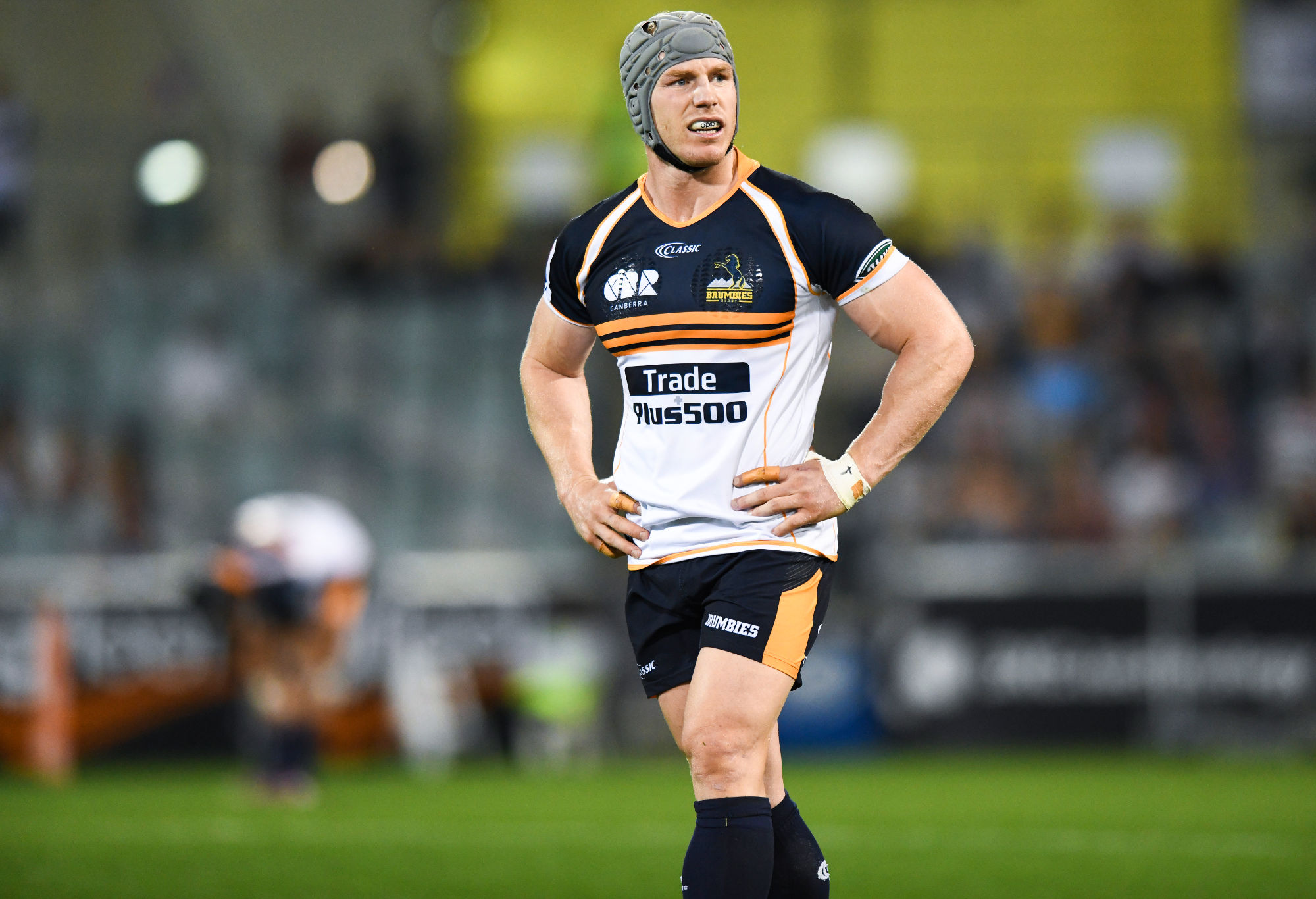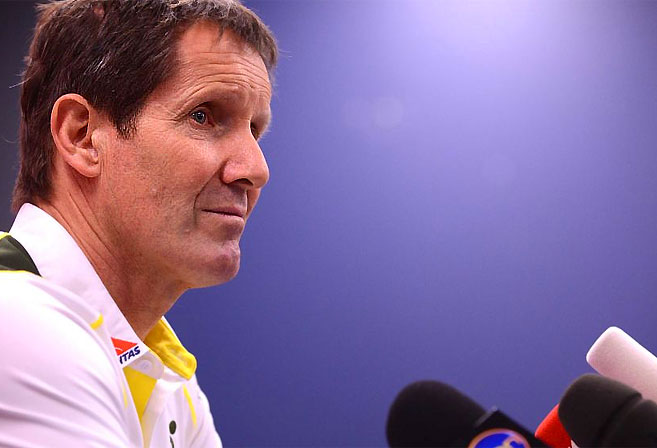The kindest thing that can be said about the Waratahs’ 29-0 loss to the Lions, at their Sydney Allianz Stadium “fortress” (sigh!), is that they were so inept at the basic skills of attacking rugby they were lucky to get zero points.
In some hundreds of their Super Rugby matches played since 1996, this is the first time the Waratahs have ever been kept scoreless.
And it is the first time that the Lions have kept any team scoreless, a record that includes playing matches against such no-hopers as the Southern Kings.
We are talking about the Waratahs here. This is a club that, during the amateur era and the early years of the professional era, has produced some of the most skilful players, forwards and especially backs, who have ever played rugby.
Not just the most skilful players ever to play in Australia. But the most skilful players ever to play rugby, anywhere and any time.
Oh my golden boys of years ago. Dally Messenger, Trevor Allan, John Thornett, Ken Catchpole, John Hipwell, Mark Ella, Simon Poidevin, Nick Farr-Jones, David Campese, Matt Burke…
The Lions, moreover, had only arrived in Sydney on Wednesday. So they had, essentially, one day to recover from jetlag before fronting up for their Friday night clash.
Think about this, too. The Waratahs on 24 points are leading the table for the Australian Conference.
The Waratahs have a points differential of +41.
The two leading New Zealand sides, the Hurricanes and the Crusaders, have PDs of +91. The leading South African side, the Lions, have a PD of +70.
The Waratahs were given a lesson in all the skills of the game by Malcolm Marx, the Lions hooker.
The Australian’s Wayne Smith calls Marx “the world’s best hooker.” I call him the world’s best hooker/number seven.
Marx has throwing skills, over-the-ball skills, running skills, smashing tackling power and, most importantly, passing skills.
When you compare Marx’s range of skills with say, David Pocock, rated by his team-mates and rugby scribes as “one of the world’s best players,” you get a sense of how far even one of the best Australian players is behind stars from other countries.

(AAP Image/Rohan Thomson)
In fact, Australian rugby does not have even one totally complete player like Marx.
NZ rugby has several totally complete players and any number of highly skilled players.
This disparity between the skill levels of the Australian sides and their counterparts from South African (even) and New Zealand was starkly indicated in the Chiefs’ demolition of the Reds at their “fortress,” Brisbane’s Suncorp Stadium.
Even with Damian McKenzie off the field for about 60 minutes of the match, the Chiefs were still able to slice up the Reds defensive lines with ease time and time again with slick passing and clever running, on and off the ball.
Two aspects of the dire performance by the Australian teams in Round 10, where all four Australian sides lost their matches, stood out for me.
First, there was very little understanding of what the new ruck laws require of players on attack and defence.
Second, all the Australian teams displayed an abject lack of skills, especially passing skills.
The ruck laws, for example, have made the “jackal” game of players like David Pocock and George Smith much less important than they were in past years. But these two players, in particular, do not seem to have adjusted their games to this new reality.
That reality is that as soon as the ruck is formed the ball cannot be turned over by a defender. Moreover, the tackler cannot get in front of the ball and play it with his hands.
Smith’s cameo at Brisbane, for instance, was marred by him conceding several penalties by going into the ruck with his hands while he was the second defender into the ruck.
David Pocock made a bad mistake, for instance, going in for the ball in the Brumbies-Jaguares match at Bruce Stadium, Canberra, some time after the ruck had been formed. He was penalised by Angus Gardner, the best Australian referee on active duty. Pocock actually queried the decision. Gardner rightly told him, “Don’t argue with me, the ruck was over before you came in from the side.”
In general, too, the notion of spacing on defence is not played properly by the Australian sides. This makes them vulnerable, as the Waratahs, Reds, Rebels and Brumbies were to their opponents who utilised a clever short and long passing game.
[latest_videos_strip category=”rugby” name=”Rugby”]
Now we come to the lack of skills.
The Australian teams tend to pass the ball into the stomach of runners or slightly behind them. They rarely pass the ball for a runner to run on to it. Few of them can pass on their left-hand side, a skill shown several times by Adriaan Strauss, the Bulls hooker, against the Rebels.
There seems to be no awareness or understanding of capitalising on turnovers, something that all the New Zealand teams and the Lions and Bulls in the South African Conference do extremely well.
Wayne Smith in the Australian (“Roaming Reds back to face the Kiwi curse”) reported that the Reds captain, James Slipper, said he was at a loss to explain why the Australian teams were able to compete with the NZ sides until two years ago but since then haven’t won a game against them.
“If we knew the answer, we would have rectified it,” Slipper told Smith.
What an indictment of the rugby intelligence of the Super Rugby coaches and the players.
Here is the answer that Slipper and all the other Australian Super Rugby players and coaches should worked out for themselves.
The New Zealand teams have up-graded their skills in every aspect of the game, especially in their passing skills.
Their teams obsessively drill in their passing skills.
We saw a glimpse of this during the semi-final of the 2015 Rugby World Cup when the All Blacks were behind the Springboks at half-time. They spent only a few minutes in the dressing room. Then they came out and started to do their passing drills.
At least one Australian coach seems to understand the rationale behind the NZ skills obsession. Andy Friend, the former coach of the Australian Men’s Sevens side, has said that he wants to coach in the 15-man game and that if got a job his main emphasis would be “to work like crazy” to lift the skills of the individual players.
Why has there been a fall-off in the skills of Australian rugby players?
The answer lies, I believe, with the mechanistic vision of rugby propounded by Eddie Jones.
When Jones took over the Wallabies, he developed a “by numbers” attacking system. The players were drilled in set moves. They were not encouraged to go away from the set move groove.
Jones also became enthused about the rugby league play-the-ball possibilities for rugby. He coached the Wallabies to submit in tackles so that there could be a fast re-cycle.
He also paid very little attention to the scrum, allowing standards in set piece play to deteriorate.
This mechanistic style has permeated all grades of Australian rugby, from the Wallabies, down through to the Super Rugby teams, to the clubs and schoolboys sides.
It took two New Zealanders, Robbie Deans and Daryl Gibson, to identify this problem.

(AAP:Dean Lewins)
When Deans took over the Wallabies he told the players that he wanted them to start playing “what was in front of them.”
In other words, they needed to play to what the situation required and not what the planned move required them to play.
Unfortunately, this meant, then as now, that the players could not adjust to the new requirement to improvise their way to tries by using finely honed skills.
And when Gibson joined the Waratahs he complained about the “playing by numbers” mentality of the players.
Deans was unsuccessful in getting his Wallabies to play with their eyes.
Gibson, also, has been even less successful in getting his Waratahs to stop trying to play by numbers.
Gibson made the point when he started with the Waratahs that the problem of unthinking play went deeper than at the Super Rugby and Test level. It started with the schoolboys and worked itself into the clubs before rising like a smothering algae to the professional level.
To solve the problem, therefore, Australian rugby has to go back to coaching skills from the schools level upwards.
This brings me to the heart of the matter.
Australian rugby needs a National Coaching Committee put in place as soon as possible to establish a coaching policy that embraces every level of the game so that, as happens in NZ, players can move from schoolboy rugby, through to club rugby and into the professional game with the appropriate skills and understanding of tactics to fit into any system a coach might embrace.
As well as raising the skill levels of players, a proper coaching policy should raise the level of coaching, at every level of the game in Australia and, especially, at the professional level.
It was saddening to see the Brumbies, for instance, kicking away possession after a couple of phases without putting any real stress on the Jaguares defence.
On the other hand, the Jaguares went through their phases patiently applying stress on the Brumbies defence and getting rewards through their first try (after 18 phases) and with multiple penalties which meant the winning of the game to them in the end.

(Photo by Gabriel Rossi/Getty Images)
Some history is needed here.
Back in the 1970s, Australian rugby was in dire trouble, on and off the field. A decision was made by the then ARU to create a National Coaching Plan to “teach coaches the art of coaching through demonstration and practical involvement.”
A key ingredient to the NCP was the “Rugby Coaching Manual,” which was written by Dick Marks, a former Wallaby and the first national director of coaching in Australia.
This manual is a compendium of the besting rugby thinking and practice at the time. It is a masterpiece. If Aristotle had written about rugby, this is the sort of manual he would have produced.

There are 25 separate chapters in the book’s 300 pages ranging from the conceptual Chapter 1 “National Coaching Plan” to the practical Chapter 25 “Basic Machine Plan,” with chapters in between on topics such as “Developing Skills in Grids” and “Individual Skills.”
The point in all of this is that the National Coaching Plan worked. From the despair of the 1970s Australian rugby gloried in nearly two decades of success.
In the 1980s, the Wallabies won back the Bledisloe Cup in NZ: there was the 1986 Grand Slam tour, a first for the Wallabies: a Rugby World Cup triumph in 1991: a second such triumph in 1999: a series of Bledisloe Cup victories: and the defeat of the British and Irish Lions in 2001.

(Credit: Russell Cheyne/Allsport)
Unfortunately, when professional rugby was introduced the National Coaching Plan was discontinued.
The coaching policy role was transferred to the coach of the Wallabies, the national team. As we have seen, these coaches have different policies and favoured methods.
I think it is fair to say that although professional era has seen some successes, particularly in the early years, these successes are not on a par with those enjoyed when there was a National Coaching Plan.
Nearly a year ago, during a period rather like that in the 1970s when the results of Australian teams were below the expectations of the rugby community, Rugby Australia convened a meeting with the high performance manager Ben Whitaker, Michael Cheika, Bob Dwyer, Rod Kafer, Mick Byrne and Dick Marks.
The meeting decided to send out a framework of initiatives to all the unions and the five Super Rugby coaches asking for comments and input. The framework included the establishment of a National Coaching Advisory Committee.
But, sorry to say, the Australian rugby community is still to see the creation of the National Coaching Advisory Committee.
On Saturday, the Reds’ defeat to the Chiefs was the 35th consecutive victory by a New Zealand team over their Australian Super Rugby opponent.
What was a dire situation a year ago for the future of Australian rugby has become disastrous with the possibility that South African teams might become as unbeatable as the New Zealand teams have been.
At the end of the July 2017 meeting, Rod Kafer, who had been recruited to arrest the decline of the 15-person code in Australia, told reporters this: “When Australia was great, we recognised that there was a team who were innovative, they were thoughtful, they were prepared to bring something a little bit different.
“We need to establish in Australia in Australia a concept of a unity of purpose …
“Every player that gets to Super Rugby level should be able to catch and pass the ball consistently under pressure.
“We should position players who get into professional rugby with a skill-set appropriate for the level of the game they are playing, and probably don’t always get at the moment.
“Every player and coach has a part to play in developing future Wallabies, Wallaroos and Olympians, and the more resources we provide to improve those players the better our future will be.”
These are fine words. And they are true words. But what the rugby community needs immediately is some action. That action must start with the immediate creation of the National Advisory Coaching Committee.
In a journey of a thousand miles, the old Chinese saying goes, it is necessary to take the first step.
Take the first step, Rod.


































































































